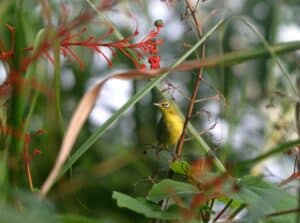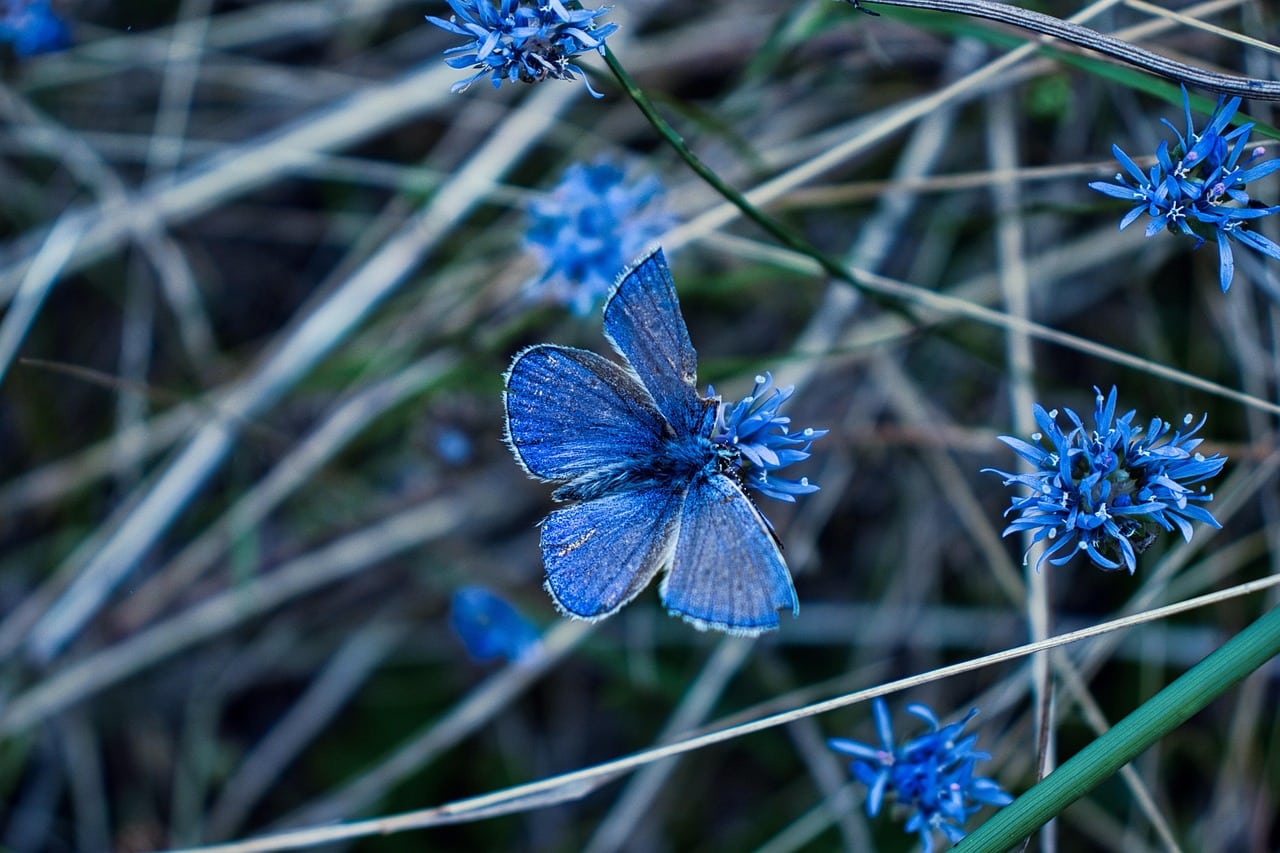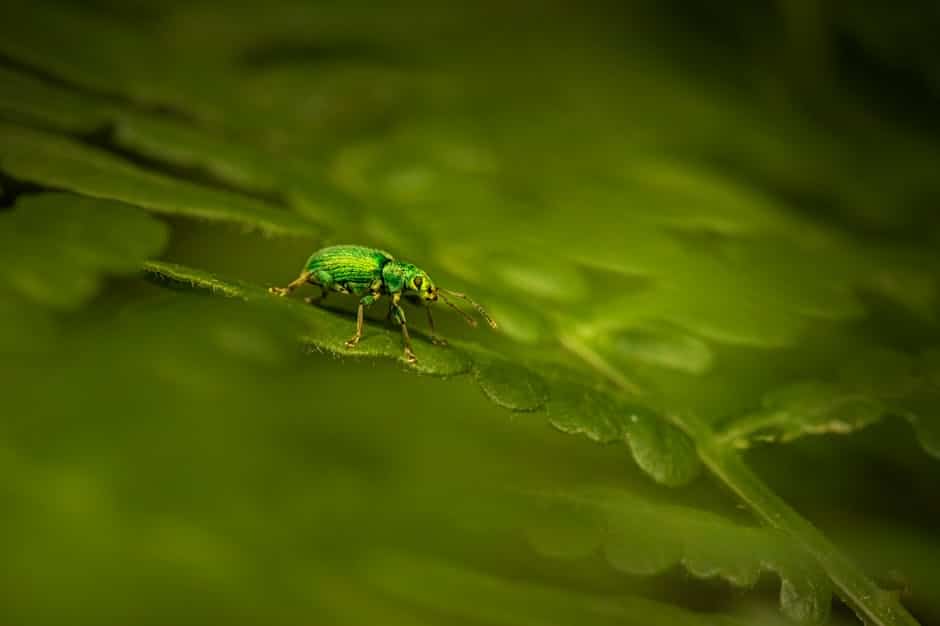Understanding Biodiversity: A Key Component in Pest Management
Biodiversity refers to the variety of life on Earth, encompassing the diversity of species, ecosystems, and genetic variations. In the context of pest management, understanding biodiversity is crucial as it plays a significant role in maintaining ecological balance and reducing the impact of pest populations. A diverse ecosystem can naturally regulate pest populations through various mechanisms, such as predation, competition, and parasitism. By fostering a rich variety of organisms, including beneficial insects, birds, and microorganisms, we can enhance the resilience of agricultural systems and reduce reliance on chemical pesticides.
Key Benefits of Biodiversity in Pest Management:
- Natural Pest Control: Predators and parasitoids, which are often part of a biodiverse ecosystem, can help control pest populations without the need for synthetic pesticides.
- Resilience to Pest Outbreaks: Ecosystems with higher biodiversity are more resilient to pest outbreaks, as the presence of multiple species can disrupt the life cycles of pests.
- Soil Health and Plant Diversity: Biodiversity contributes to soil health, which in turn supports a wider variety of plants. Diverse plant communities can deter pests and reduce disease incidence.
Integrating biodiversity into pest management strategies can also lead to sustainable agricultural practices. For example, crop rotation and intercropping not only promote biodiversity but also disrupt pest cycles, making it more challenging for pests to thrive. Furthermore, incorporating native plants into agricultural landscapes can attract beneficial insects and pollinators, which are vital for crop production. By understanding and leveraging the interconnectedness of biodiversity and pest management, farmers can create more sustainable systems that minimize environmental impact.
Moreover, understanding biodiversity extends beyond just the management of pests. It also involves recognizing the importance of preserving habitats and ecosystems that support diverse species. Conservation practices that protect natural habitats can enhance the ecological services they provide, such as pest control, pollination, and nutrient cycling. By valuing and maintaining biodiversity, we not only improve pest management but also contribute to the overall health and sustainability of our agricultural landscapes.
How Biodiversity Enhances Natural Pest Control Mechanisms
Biodiversity plays a critical role in maintaining the balance of ecosystems, particularly in enhancing natural pest control mechanisms. A diverse array of plant and animal species creates a complex web of interactions that can naturally suppress pest populations. When multiple species coexist, they can regulate each other’s populations through predation, parasitism, and competition. This natural equilibrium reduces the need for chemical pesticides, promoting healthier ecosystems and sustainable agricultural practices.
One of the primary ways biodiversity contributes to pest control is through the presence of natural predators. For instance, a variety of insect species, such as ladybugs, lacewings, and predatory beetles, can effectively manage aphid populations in gardens and crops. By fostering habitats that support these beneficial insects, farmers can encourage their presence and enhance their pest control capabilities. Additionally, plants that attract these predators, such as flowering plants, can create a more resilient agricultural environment.
Key Benefits of Biodiversity in Pest Control:
- Predator-Prey Dynamics: A diverse ecosystem supports various predator species that keep pest populations in check.
- Habitat Complexity: Different plant structures provide shelter and resources for beneficial organisms, enhancing their survival and effectiveness.
- Resilience to Pest Outbreaks: Biodiversity ensures that no single pest species can dominate, thus preventing severe infestations.
- Natural Disease Control: Diverse ecosystems can help regulate the spread of diseases that affect both pests and crops.
Moreover, the presence of diverse plant species can contribute to pest management by creating a more balanced microhabitat. Plants that provide nectar and pollen serve as food sources for beneficial insects, ensuring their survival and activity in the ecosystem. This not only aids in pest control but also enhances pollination, leading to improved crop yields. By embracing biodiversity, farmers and land managers can leverage these natural pest control mechanisms, resulting in healthier crops and reduced reliance on synthetic pesticides.
The Impact of Biodiversity Loss on Pest Populations and Crop Health
The decline in biodiversity has significant repercussions on pest populations and overall crop health. As ecosystems become less diverse, the natural checks and balances that control pest populations are disrupted. A diverse ecosystem typically includes a variety of predators, parasites, and diseases that help regulate pest numbers. However, when biodiversity is lost, these natural enemies may decline or disappear, leading to unchecked pest populations. This imbalance can result in increased pest pressure on crops, which may require farmers to rely more heavily on chemical pesticides, ultimately harming both the environment and human health.
Key Factors Contributing to Pest Population Growth:
- Monoculture Practices: The cultivation of a single crop variety over large areas reduces habitat diversity and the presence of natural pest predators.
- Habitat Fragmentation: Urbanization and agricultural expansion lead to fragmented habitats, making it difficult for pest predators to thrive.
- Climate Change: Changes in climate can alter pest life cycles and distribution, potentially leading to outbreaks in previously unaffected areas.
The impact of biodiversity loss extends beyond pest populations; it also affects crop health directly. Diverse ecosystems contribute to soil health and fertility, which are crucial for robust crop growth. The loss of plant diversity can lead to nutrient deficiencies in the soil, making crops more susceptible to diseases and pests. Furthermore, crops that lack genetic diversity may be less resilient to environmental stresses, such as drought or disease, leading to lower yields and reduced food security.
In addition, the reliance on chemical pesticides as a response to increased pest populations can create a vicious cycle. Over time, pests may develop resistance to these chemicals, necessitating even stronger interventions. This not only poses risks to human health and the environment but also threatens the sustainability of agricultural practices. By understanding the intricate connections between biodiversity, pest populations, and crop health, stakeholders can work towards more sustainable agricultural practices that promote ecosystem resilience.
Case Studies: Successful Pest Management Strategies Leveraging Biodiversity
Pest management strategies that incorporate biodiversity have shown significant success in various agricultural and ecological settings. These strategies not only reduce pest populations but also enhance ecosystem resilience. One notable case study comes from the coffee farms in Colombia, where farmers have integrated shade trees into their plantations. By promoting a diverse range of flora, these farmers have attracted natural predators of common coffee pests, such as the coffee borer beetle. This approach has led to a marked decrease in pesticide use and improved coffee yields, demonstrating the power of biodiversity in pest control.
Another successful example can be found in the rice fields of the Philippines, where farmers have implemented Integrated Pest Management (IPM) practices that utilize local biodiversity. By encouraging the presence of beneficial insects and birds through the introduction of native plants, farmers have seen a significant reduction in rice pests like the brown planthopper. This strategy not only protects crops but also maintains the ecological balance within the rice ecosystem, promoting a healthier environment. The results indicate that leveraging biodiversity can create a sustainable approach to pest management that benefits both farmers and the environment.
Key Elements of Successful Biodiversity-Based Pest Management Strategies:
- Encouraging Natural Predators: Implementing practices that attract and sustain natural predators of pests.
- Crop Diversity: Planting a variety of crops to disrupt pest life cycles and reduce infestations.
- Habitat Restoration: Restoring natural habitats to support a diverse range of species that contribute to pest control.
- Community Involvement: Engaging local communities in biodiversity conservation efforts to enhance pest management.
In the vineyards of California, a unique approach to pest management has been employed by integrating native flowering plants into the vineyard landscape. This practice not only attracts beneficial insects, such as ladybugs and lacewings, which prey on pests like aphids but also supports pollinators that enhance grape production. By fostering a biodiverse environment, vineyard managers have successfully reduced their reliance on chemical pesticides while improving grape quality and yield. Such case studies highlight the tangible benefits of biodiversity in developing sustainable pest management solutions across various agricultural sectors.
Practical Steps to Promote Biodiversity in Agricultural Practices
Promoting biodiversity in agricultural practices is essential for sustainable farming and ecological balance. By integrating diverse species and practices, farmers can enhance soil health, increase resilience to pests, and improve crop yields. Here are some practical steps that can be taken to foster biodiversity in agriculture.
1. Crop Rotation and Diversification
Implementing crop rotation is a fundamental practice that can significantly enhance biodiversity. By alternating different crops in the same field over seasons, farmers can break pest and disease cycles, improve soil fertility, and promote a variety of microorganisms. Additionally, diversifying crop species can attract beneficial insects and pollinators, which are crucial for ecosystem health.
- Rotate crops: Choose a mix of legumes, grains, and vegetables to improve soil structure and nutrient content.
- Intercropping: Grow multiple crops in proximity to increase biodiversity and reduce pest outbreaks.
- Cover crops: Use cover crops during off-seasons to protect soil and promote biodiversity.
2. Sustainable Soil Management
Healthy soil is the foundation of a biodiverse agricultural system. Employing sustainable soil management techniques can help maintain and enhance soil biodiversity. Practices such as reduced tillage, organic amendments, and composting can support a rich community of soil organisms, which in turn contributes to plant health and productivity.
- Minimize tillage: Reducing soil disturbance helps preserve the habitat of beneficial organisms.
- Use organic fertilizers: Incorporate compost and green manures to improve soil fertility and microbial diversity.
- Implement mulching: Use organic materials to protect soil, retain moisture, and promote a diverse ecosystem.
3. Encourage Natural Pest Management
By fostering a habitat for natural predators, farmers can reduce reliance on chemical pesticides, thus promoting biodiversity. Creating a balanced ecosystem encourages the presence of beneficial insects and wildlife that help control pest populations naturally.
- Plant hedgerows: Establishing borders of native plants can attract beneficial insects and provide habitats for birds and other predators.
- Implement integrated pest management (IPM): Use a combination of biological, cultural, and mechanical control methods to manage pests sustainably.
- Promote pollinator habitats: Plant diverse flowering plants to support pollinators, essential for crop production.
By adopting these practical steps, farmers can contribute to the preservation of biodiversity while enhancing their agricultural practices, leading to a more sustainable and productive farming system.













